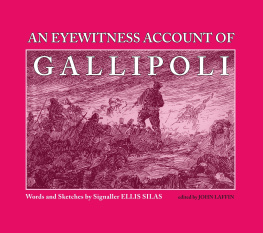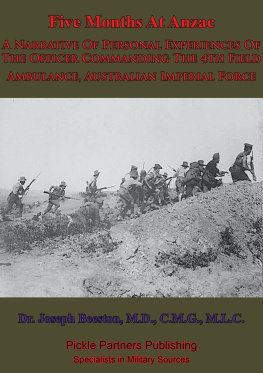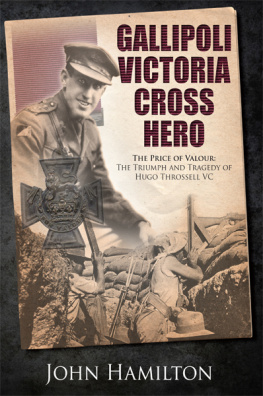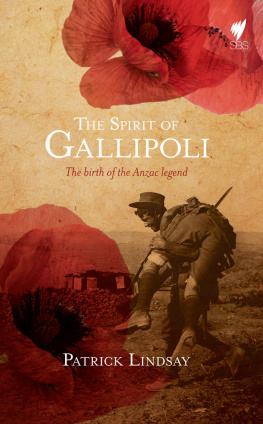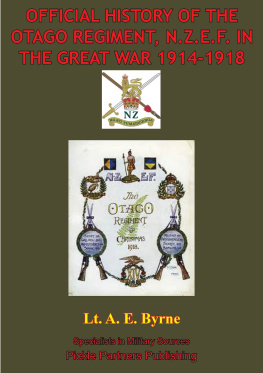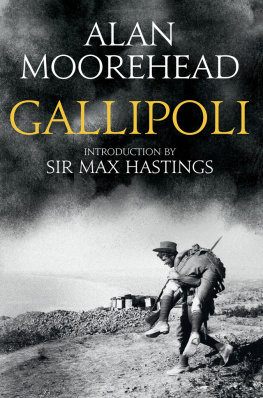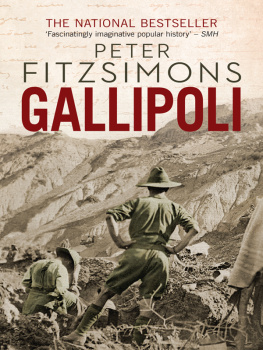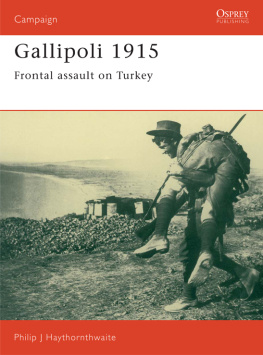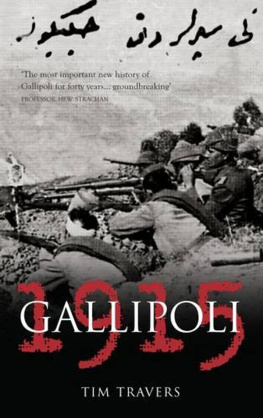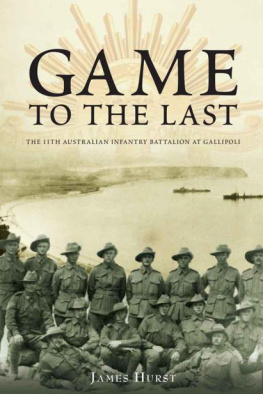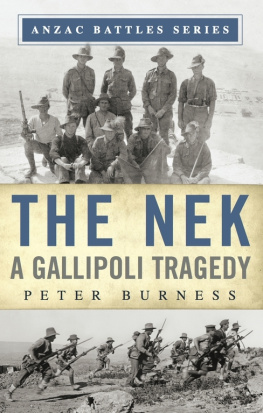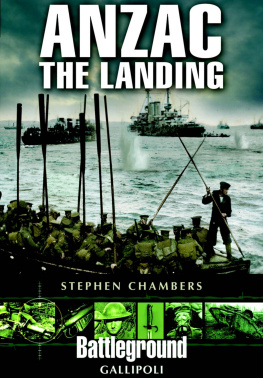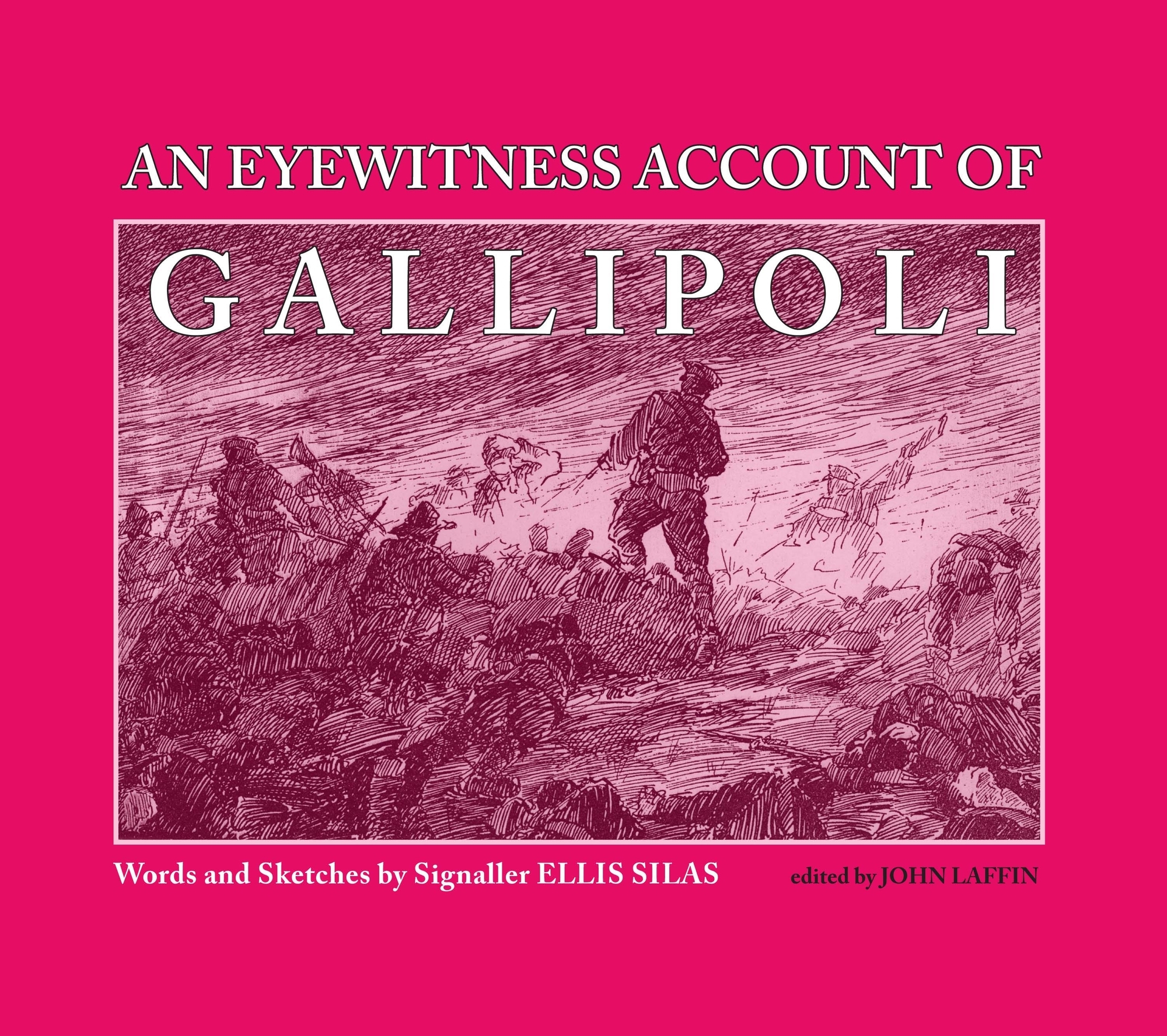First published as Crusading at Anzac in London in 1916.
This edition published in 2010 by Rosenberg Publishing Pty Ltd.
PO Box 6125, Dural Delivery Centre NSW 2158
Phone: +61 2 9654 1502 Fax: +61 2 9654 1338
Email: rosenbergpub@smartchat.net.au
Web: www.rosenbergpub.com.au
Ellis Silas The Anzac Artist.
Private Ellis Silas of the 16th Battalion, Australian Imperial Force, is an important but little-known soldier: He was the only artist to paint and sketch actual battle scenes showing Australian soldiers in action at Gallipoli in 1915. Ellis knew war at first hand; he was in the thick of much action in AprilMay 1915 and it is astonishing that he survived.
Given his service as a soldier and his productivity as an artist it is remarkable that his name is not familiar to Australians while the names of Will Dyson and others are known to all students of Australias part in the Great War and to many other people.
In writing this introduction to this new edition of Ellis Silas book, first published early in 1916, I am conscious of the need to describe Silas interesting background for those who have not heard of him.
Ellis Luciano Silas was born in London in 1885, the son of Louis Silas, a designer and professional painter of nature subjects and Letizia, an opera singer. Such parents could afford to have their son educated at home by tutors, after which he trained in his fathers studio and studied under Walter Sickert, a noted artist.
Silas chief interest at that time was in marine art and he joined the Royal Naval Volunteer Reserve more easily to study the sea. He set up his easel in a series of English coastal towns, including Brighton, where he produced seascapes and coastal subjects.
Emigrating to Australia in 1907, Silas lived briefly in Sydney, Melbourne and Adelaide before deciding that he liked Perth most of all and here he established a studio.
When war broke out in August 1914 Ellis at once wanted to join the AIF for service overseas but this was not easy.
Weighing only 134 pounds (61 kg), with a chest expansion of 34 inches, he was a slight figure and some medical examining officers rejected him. He persisted and a Captain V.O. Stacy accepted him on 28 September. Ellis took his enlistment oath to resist His Majestys enemies on 16 October.
He desperately wanted to join the Army Medical Corps, for which his nature made him eminently suitable, but he was sent to the Signallers Corps as it was then known and despatched to Blackboy Hill Camp, Western Australia. Some of his documents at this time show him as Silas Ellis; clerks and officers had difficulty in understanding that his surname was Silas, when it is usually a first name. On one form an impatient officer has heavily underscored SILAS to emphasise the family name.
Silas, though enthusiastic, was the odd man out among the tough West Australian bushmen who were his new mates in the 16th Battalion. His instructors despaired of him. On one occasion, during parade ground drill, Ellis was fascinated by a beautiful sunset which held his attention. After a while he realised that the platoon had marched off, leaving him alone.
He wore his slouch hat in an odd way, apparently with the brim rolled up both sides. On parade, the adjutant shouted at him that he looked like a bloody bandit, though his language was stronger than this. In his diary, Silas wrote, I thought I looked nice but individuality does not find favour in the army.
He was to prove himself a courageous and able soldier but his sensitive nature caused him profound distress at Anzac.
The 16th Battalion sailed to Melbourne for further training and the ship stopped in Adelaide, where the troops were given four hours leave. Most of the men made for the pubs, but Silas, despite having been seasick, went first to the art gallery and then visited his artist friends, James and William Ashton.
On 22 December the battalion boarded the troopship Ceramic , which stopped only long enough at Albany, Western Australia, to join a convoy. The ships reached Alexandria on 1 February 1915 and Silas army-life sketches, paintings and drawings began from the time that his unit marched into camp at Heliopolis. The shades and tints intrigued him and he painted many watercolours. He had to join in the training and he became a competent signaller with semaphore flags but he remained much more interested in his art.
The 16th left for Lemnos Island on 11 April, in readiness for the Gallipoli campaign. The unit was not part of the first wave at dawn and Silas wrote, In the distance I can just discern the Dardanelles opening up the thunder of guns is much clearer. The weather this morning is beautiful; what will it be tonight?
I wonder which of the men around me have been chosen by Death. I do not feel the least fear, only a sincere hope that I may not fail at the last moment.
With his mates he went ashore at Anzac Cove about 4pm and it was a magnificent spectacle. He wrote of, thousands of men rushing forward through this hail of death as though it were some big game. These chaps dont seem to know what fear means. In Cairo I was ashamed of them [because some were badly behaved] now I am proud of them, and feel a pygmy among them.
Silas was appalled at the carnage as he picked his way through the dead and the wounded. Amid great confusion, sixteen men struggled to hack out positions on Popes Hill, an action which Silas sketched and painted. He spent all night running despatches up and down hill. With most of the signallers wounded or dead, Silas showed amazing fortitude and remained on duty for four days with nothing more than a few brief rests. He collapsed and was ordered out of the firing line.
On 2 May the 16th fought incessantly at Bloody Angle and only 307 survivors remained after 24 hours. I dont think I will ever be able to forget this, its horrible, Silas wrote. He was referring to these fine stalwart men going up the gully to reinforce and shortly returning, frightfully maimed and covered with blood.
Silas did not spare himself in doing his duty and he collapsed on the battlefield, from where he was rescued. The doctors found him to be suffering from extreme debility, shock and neurasthenia. By now devoted to his mates, Silas did not want to leave Anzac, but in May the battalion medical officer persuaded him to spend a few weeks away from Gallipoli. Almost certainly, the doctor knew that Silas was finished as a combat soldier.
With other sick and wounded he was taken to Egypt where he spent some time in the 1st Australian General Hospital at Heliopolis. From here he was sent to England for treatment at a hospital at Woodcote Park.
He was eventually discharged from the AIF, in London, on 17 August 1916, his papers marked Permanently unfit for war service at home or abroad. He had served one year and 307 days and his military character was noted as very good.
His signature on the discharge certificate and on other documents at this time is bold, artistic and confident, quite unlike his hesitant signature on the attestation paper of 1914.

